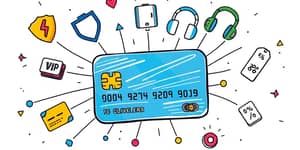
Credit card fraud has become an omnipresent threat in today’s interconnected world. Criminals leverage cutting-edge tools and social engineering to exploit unwary consumers.
As digital transactions surge, so does the risk of financial data falling into the wrong hands. It’s essential to fortify your defenses against evolving tactics used by fraudsters.
In this comprehensive guide, we explore actionable strategies, technological solutions, and expert tips to help you safeguard your financial information and maintain peace of mind.
Credit card fraud is a versatile crime that adapts to technological advances. From simple skimming devices to sophisticated malware, criminals continue to find new entry points.
EMV chip cards have curbed fraud at physical terminals, but online purchases remain vulnerable. Experts estimate over $10 billion lost annually in the U.S. alone, with most incidents occurring in card-not-present scenarios.
Awareness of fraud types empowers you to recognize red flags. Below are some of the most prevalent schemes targeting cardholders today:
Each method relies on either technological exploits or human error. Staying vigilant can dramatically reduce your exposure.
Fraudsters employ a blend of tactics:
- Malware and spyware intercepting data on compromised devices. - Unsecured public Wi-Fi networks allowing packet sniffing. - Social engineering via calls, emails, or texts tricking users into sharing sensitive details.
Identifying these schemes early can help you interrupt the fraud cycle before significant damage occurs.
Proactive habits form the cornerstone of fraud prevention:
These measures help you spot anomalies quickly and take immediate action.
Financial institutions and merchants deploy advanced tools to protect you:
By understanding and leveraging these solutions, you can add robust layers of security around your accounts.
If you detect unauthorized charges or suspect your card details have been compromised, act swiftly. First, contact your issuer to report the incident and request a card freeze or replacement.
Next, dispute fraudulent transactions through your bank’s online portal or customer service line. Under most zero-liability policies, you won’t be held responsible for unauthorized purchases when reported promptly.
Finally, file a report with your local law enforcement agency and notify credit bureaus. This creates an official record and helps prevent further unauthorized account openings under your name.
Maintaining vigilance over time is crucial. Consider these enduring practices:
Check your credit report at least annually for unfamiliar accounts or inquiries. Use distinct cards for recurring payments and everyday spending to limit exposure if one account is compromised.
Educate family members and colleagues about fraud tactics and safe payment habits. Running periodic security reviews can reinforce strong financial hygiene across your network.
By combining vigilant monitoring, secure behaviors, and the latest technological safeguards, you can significantly reduce your risk of credit card fraud. Stay informed, stay cautious, and reclaim control over your financial well-being.
References













